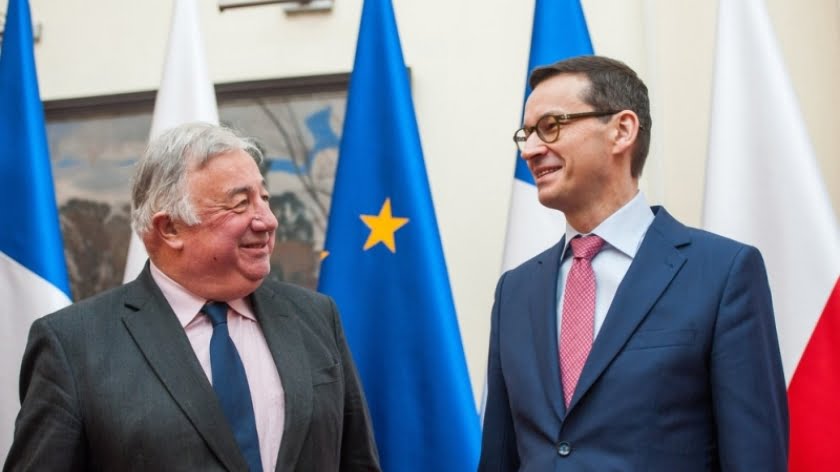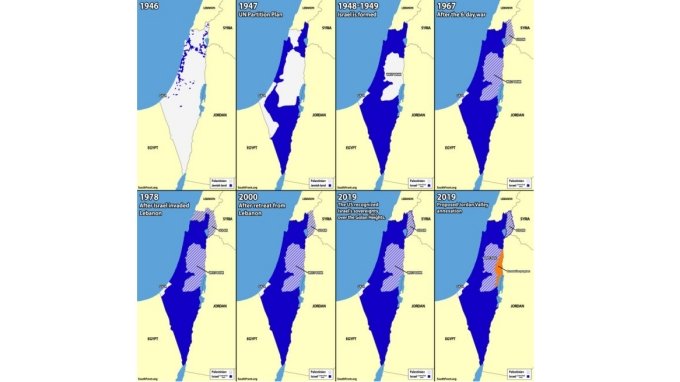Jerusalem: a Newly-Recognized East-West City
After the Berlin wall fell in 1989, the only major divided capital city in the world was Nicosia, split between its southern Greek part and its northern Turkish sector. Entrepreneurship resulted in the opening of a bar at the United Nations-operated crossing point between the Greek and Turkish sectors called “Checkpoint Charlie II,” a reference to the former crossing point between the American and Soviet sectors in Berlin.
Based on recent diplomatic moves, Nicosia could soon be joined by another officially divided city: Jerusalem.
With recent decisions by the Trump administration and its like-minded ally in Australia, the Scott Morrison government, the ground is being set for international recognition of two Jerusalems: east and west. During a Middle East policy speech in Sydney, Morrison recently announced that Australia was recognizing West Jerusalem as the capital of Israel, citing the presence of the Israeli Knesset (parliament) in the western part of the city. However, Morrison also said that Australia was prepared to recognize East Jerusalem, which is claimed by Israel as part of is capital city, as the future capital of a Palestinian state, pending a negotiated settlement on borders between the Palestinians and Israelis.
Morrison said that Australia was going to begin to look for land for a future Australian embassy in West Jerusalem but that the Australian embassy would remain in Tel Aviv until a “final status” determination on Jerusalem was made by the principal parties, Israel and the Palestinians. However, Morrison did state that Australia would soon open a “trade and defense office” in West Jerusalem.
Israel illegally annexed East Jerusalem – including the “Old City” of Jerusalem, holy to Jews, Christians, and Muslims – after the 1967 Israeli-Arab war. Previously, East Jerusalem was under the control of Jordan.
In December 2017, Donald Trump recognized Jerusalem as Israel’s capital but without acknowledging its claim over East Jerusalem. However, by declaring that the United States recognizes only a “united Jerusalem” as Israel’s capital, the Trump administration appeared to be recognizing Israel’s annexation of East Jerusalem. Moreover, Trump ordered the US embassy in Tel Aviv moved to West Jerusalem. The United States also closed its Consulate-General for Jerusalem, a diplomatic mission that was always viewed as America’s diplomatic representation to the Palestinians. The Consulate-General’s functions were transferred to the US embassy in Jerusalem.
Making matters worse for East Jerusalem’s status, the Trump administration ordered closed the Palestine Liberation Organization’s mission in Washington, DC, which amounted to a total US rejection of the Oslo Accords of 1993, which led to the Palestinian official diplomatic presence in the US capital.
Morrison’s decision was met with immediate opposition from the Binyamin Netanyahu government. It rejected Australia’s notion that Jerusalem was divided. Palestine’s chief diplomatic negotiator, Saeb Erekat, also rejected Australia’s decision, stating to Reuters, “All of Jerusalem remains a final-status issue for negotiations, while East Jerusalem, under international law, is an integral part of the occupied Palestinian territory.”
Only Guatemala followed the US lead by recognizing Jerusalem as Israel’s capital and moving its embassy to the city from Tel Aviv. Paraguay followed suit, but it soon announced that its embassy was moving back to Tel Aviv from Jerusalem.
Australia’s recognition of only West Jerusalem as Israel’s capital was similar to a similar declaration by Russia in April 2017. However, Russia also declared that East Jerusalem would be “the capital of the future Palestinian state.” The Israelis were as unhappy with Russia’s demarche as they were with Australia’s.
After initial jubilation by Netanyahu’s government over Morrison’s recognition of West Jerusalem as Israel’s capital, the details of Australia’s “shift” caused some degree of angst in Israel. Morrison also stated that Australia continues to support United Nations Security Council Resolutions 478 and 2334, both of which condemned Israel’s annexation of East Jerusalem as illegal under international law. Morrison also condemned Israel’s illegal settlements in the occupied West Bank. Morrison’s condemnation of the settlements was a far cry from the policies enunciated by Trump’s ambassador in Jerusalem, his former lawyer David Friedman, who refers to the West Bank as Israel’s fully-incorporated “provinces” of “Judea and Samaria.” Friedman’s lavish support for Netanyahu’s expansionistic policies is also backed by Trump’s two “envoys” for Middle East “peace” negotiations – his son-in-law Jared Kushner and another former Trump lawyer, Jason Greenblatt. Friedman, Kushner, and Greenblatt only favor “peace” on Israel’s terms, with the Palestinians being relegated to an occupied people devoid of basic human rights, including the inhabitants of East Jerusalem.
Brazil’s incoming far-right president, Jair Bolsonaro, has promised to move Brazil’s embassy from Tel Aviv to Jerusalem and close the Palestinian embassy in Brasilia. Based on Bolsonaro’s previous comments that reject the existence of a Palestinian people and nation, he may decide that Brazil should be the first country to establish an embassy in contested East Jerusalem, a move that will cost Brazil’s relations with the Arab and Muslim world dearly. The Arab countries annually import from Brazil $6 billion in poultry products. Such trade could suffer if Bolsonaro carries out his plans. Indonesia has already reacted negatively to Australia’s recognition of West Jerusalem as Israel’s capital. A free-trade deal between Canberra and Jakarta may be one casualty of Morrison’s decision on Jerusalem.
The political status quo for Jerusalem appears to be similar to that of Nicosia. South Nicosia is the capital of the Republic of Cyprus. North Nicosia is the de facto capital of the Turkish Republic of Northern Cyprus, a state that only Turkey recognizes as independent.
Israel vents its anger over the political division of Jerusalem, but that is exactly what it and Egypt did to the city of Rafah, which was once divided into a Gaza sector and an Egyptian one. Before Israel withdrew from Sinai in 1982, it destroyed the Gazan sector of Rafah, which included the city’s center. Between 2013 and 2015, Egypt, with Israel’s encouragement, destroyed its sector of Rafah, totally demolishing 3300 buildings, including private homes, in Egyptian Rafah. Thousands of people were forcibly evicted from their homes. The Rafah Crossing Point between Egypt and Gaza is now a militarized sector, with watch towers, sensors, and barbed wire.
Israel, through its draconian policies, seems intent on ridding East Jerusalem of its Arab population, just as Egypt de-populated its part of Rafah. Yair Netanyahu, the son of Prime Minister Netanyahu, recently posted on Facebook the following:
“There will not be peace here until:
1. All the Jews leave the land of Israel.
2. All the Muslims leave the land of Israel.
I prefer the second option.”
Yair Netanyahu’s opinion is not an outlier in Israel. Many Israeli Jews agree with him.
There are other divided cities, but none stirs the passions of people around the world as does Jerusalem. Even war-torn Somalia has accepted the divided status of the city of Galkayo, split between the self-declared autonomous state of Puntland and the autonomous region of Galmudug.
Jordan, the Arab League, and the Organization of Islamic Cooperation (OIC) have called on all countries to recognize the State of Palestine and East Jerusalem as its illegally occupied capital. Australia, in a move that was designed to help Israel, may have opened the door for more nations to recognize East Jerusalem as Palestine’s capital. There is a possibility that Jerusalem, one day, could be a divided city, with West Jerusalem as the internationally-recognized capital of Israel and East Jerusalem as the capital of Palestine. In that event, an enterprising businessman might open a “Checkpoint Charlie III” bar somewhere near the international crossing point.
By Wayne Madsen
Source: Strategic Culture







